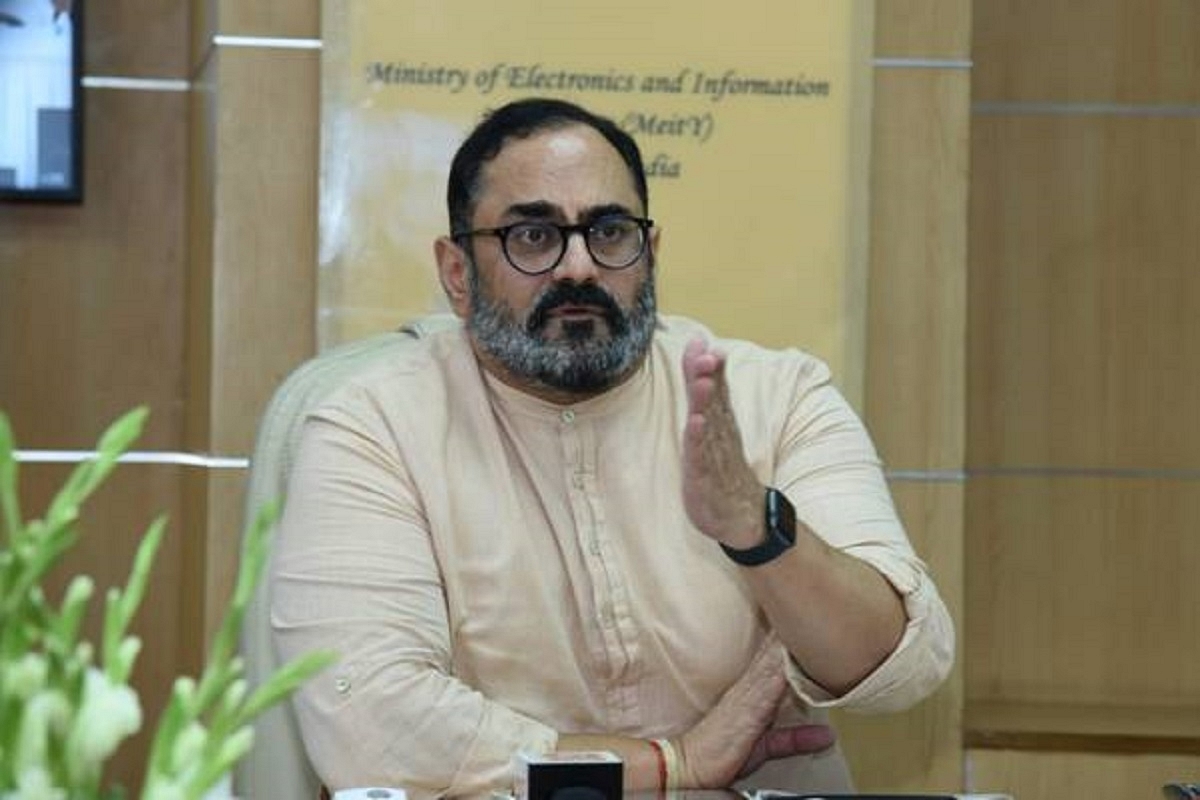Technology
Market, Talent, Innovation And Government Policy Will Together Drive India's ‘Techade’: Rajeev Chandrashekhar
- Market demand, talent and innovation and now the new government policy — together will build strong semiconductor ecosystem in India.

Minister of State for IT Rajeev Chandrasekhar.
Inaugurating the 35th International VLSI Design and Embedded Systems Conference, 2022, through a virtual event on Monday (28 February), Minister of State for Electronics, IT, Skill Development and Entrepreneurship, Rajeev Chandrashekhar highlighted the various opportunities India has in this ‘techade’.
He said how the latest policy and incentives announced for semiconductor fabs and ecosystem will boost Prime Minister Narendra Modi's vision for Indian technology sector in the next 10 years or ‘techade’ — the most important decade for the tech industry.
The minister said India's ambitions in this domain are now very clear.
Chandrashekhar said that India has been doing well in technology services, and technology has been employed to create a resilient economy, government and citizenry. Market demand, talent and innovation and now the new government policy — together will build strong semiconductor ecosystem in India.
Guest of Honour Dr Ashwath Narayan C N Minister of Higher Education, IT and BT, Science and Technology, Skill Development, Entrepreneurship and Livelihood, Karnataka, said that his state wants to utilise all available resources and industry academia collaboration and ultimately cater to the manpower requirement of the entire world.
Balajee Sowrirajan, MD of Samsung India R&D Centre, said that the chip industry is poised to break away from the cyclical nature of its demand now that chips are fast becoming part of almost everything we use. Sambit Sahu, vice-president at Intel said that industry has to propel the semiconductor revolution in India along with government and academia.
The conference featured technical presentations, panel discussions, poster sessions, user design sessions and industry forum sessions in a virtual environment. In a panel discussion about the future of semiconductor industry in India, the panelists were of the opinion that the time has come to boost the missing manufacturing element in India.
Dr Satya Gupta, president, VLSI Society of India, said the chip shortage followed by the emphasis on the semiconductor ecosystem in India and world over, is likely to create the need to train nearly 2 lakh VLSI design engineers and more than 10,000 skilled technicians in India.
Raja Manickam, CEO of Tata Electronics OSAT recalled how in countries like Taiwan, even though the market is small, export had propelled the semiconductor manufacturing industry to great heights. In India, we additionally have a big market and so there are more reasons for it to take off.
Earlier, National Association of Software and Services Companies’ (NASSCOM) Strategic Review 2022 had reported that the Indian technology industry crossed the $200 billion revenue mark, reaching $227 billion revenue in 2022, witnessing $30 billion incremental revenues in the year with an overall growth rate of 15.5 per cent.
Support Swarajya's 50 Ground Reports Project & Sponsor A Story
Every general election Swarajya does a 50 ground reports project.
Aimed only at serious readers and those who appreciate the nuances of political undercurrents, the project provides a sense of India's electoral landscape. As you know, these reports are produced after considerable investment of travel, time and effort on the ground.
This time too we've kicked off the project in style and have covered over 30 constituencies already. If you're someone who appreciates such work and have enjoyed our coverage please consider sponsoring a ground report for just Rs 2999 to Rs 19,999 - it goes a long way in helping us produce more quality reportage.
You can also back this project by becoming a subscriber for as little as Rs 999 - so do click on this links and choose a plan that suits you and back us.
Click below to contribute.
Latest